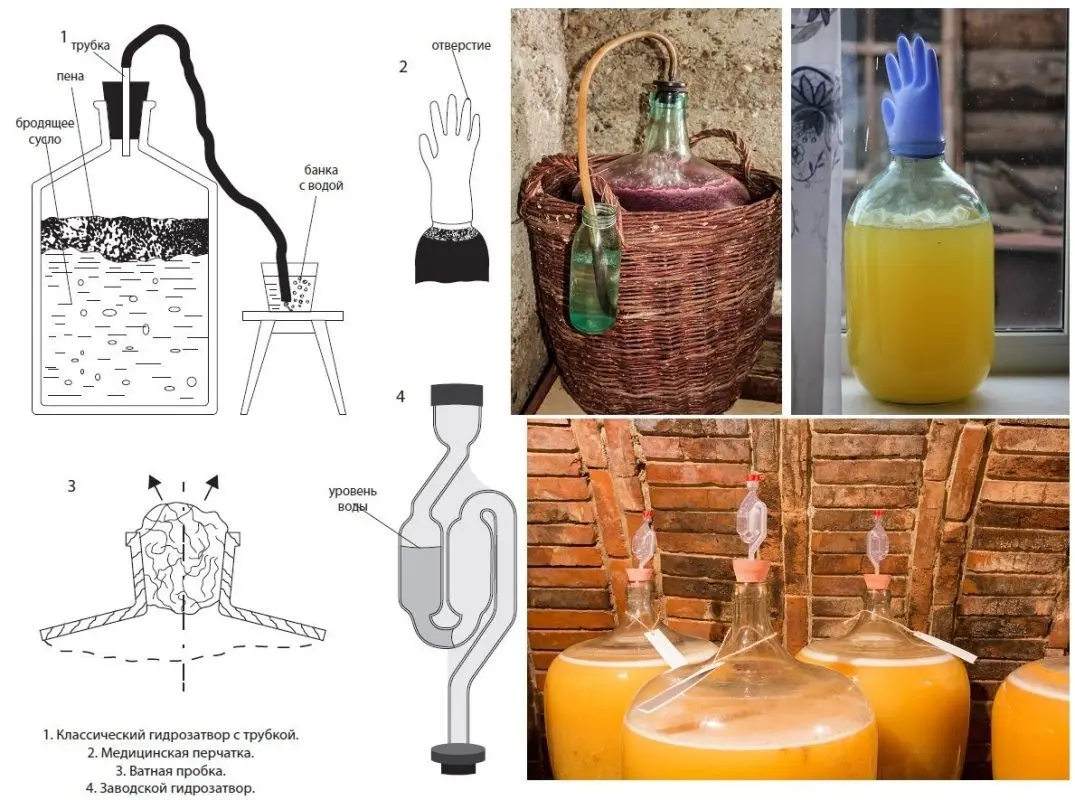When acacia blossoms, the air is filled with a pleasant sweet smell of nectar. Bees can collect up to 20 kg of honey from one tree. Few people know that this flavor can be preserved for the winter by making white locust wine at home. We will consider the correct cooking technology further.
For winemaking purposes, acacia flowers should be cut off when they contain a maximum of nectar: early in the morning or 1-2 hours after rain. At the same time, it is very important not to wash the collected flowers with water, otherwise some of the nectar will be lost, and the wine will turn out not so fragrant.
All used containers should be sterilized with boiling water, then wiped dry so that third-party microorganisms do not infect the wort.
Ingredients for 8 liters of wine:
- white acacia flowers – 2-liter jar (tightly packed);
- water – 7 liters;
- sugar – 2 kg;
- citric acid – 8 teaspoons (or juice of 8 medium lemons);
- unwashed raisins – 50 grams (can be replaced with wine yeast).
Acacia flowers contain almost no acid, which is needed for normal fermentation, the acidity has to be raised artificially with citric acid or juice. If this is not done, the wine will turn out tasteless and will be poorly stored. On the surface of the raisins are wild wine yeast, which is used to activate fermentation.
Acacia wine recipe
1. If there is no wine yeast, make a starter 3-4 days before working with flowers: put unwashed raisins (preferably large ones) in a jar, add 10-15 grams of sugar and 100 ml of water. Tie the jar with gauze and put in a warm place. After 2-4 days, foam will appear on the surface, which means that the starter is ready.
It is possible to simply add raisins to the wort in the fifth stage without making the starter, but then there is no guarantee that fermentation will begin.
2. Pour boiling water over the flowers (half the volume of water, in our case 3,5 liters), mix, cover and leave for a day.
3. Strain the infusion through 2-3 layers of gauze, squeeze out the petals. Add citric acid or juice. Mix.
4. Prepare sugar syrup: mix the second half of water (3,5 liters) and sugar in a saucepan. Bring to a boil, boil for 3-5 minutes over low heat, removing the foam. The syrup is ready when the foam no longer appears. Cool to room temperature.
5. In a fermentation tank, mix acacia infusion and cold syrup. Fill the vessel to a maximum of 75% of the volume to leave room for foam and carbon dioxide. Add wine yeast or sourdough (no berries, just liquid).

6. Install a water seal of any design on the neck of the container. You can use a medical glove by making a hole in one of the fingers with a needle.
7. Transfer the must to a dark room (can be covered) with a stable temperature of 18-25°C. Depending on the temperature and activity of the yeast, the fermentation of homemade acacia wine lasts 25-60 days. Then the water seal stops emitting gas (or the glove deflates), a layer of sediment falls at the bottom, and the wine itself becomes lighter. When these signs appear, you can proceed to the next step.
If the wine ferments for more than 50 days, in order to avoid bitterness, you need to remove it from the sediment, then let it ferment under the same conditions.
8. Pour the young wine through a straw into another container, without touching the sediment at the bottom. Taste the drink, optionally add sugar for sweetness (to taste). You can also fix the wine with 40% alcohol or vodka (2-15% by volume). The addition of hard liquor aids storage, but the taste changes.
9. Preferably filled to the top with wine (so that there is no air gap), transfer the hermetically sealed container to the cellar or refrigerator for maturation, which will improve the taste. The temperature should be 6-16°C. The exposure period is 5-6 months. If sugar was added at the previous stage, it is better to keep the first 7-10 days under a water seal so that the container does not burst if the drink ferments again.
Check acacia wine twice a month for sediment. If the layer is 2 cm or more, the drink should be filtered by pouring it through a tube into another container.
10. After 5-6 months, the finished white acacia wine can be bottled and hermetically sealed.
When stored in a cellar or refrigerator, the shelf life is up to 3 years. Fortress – 10-12% (without fixing).










